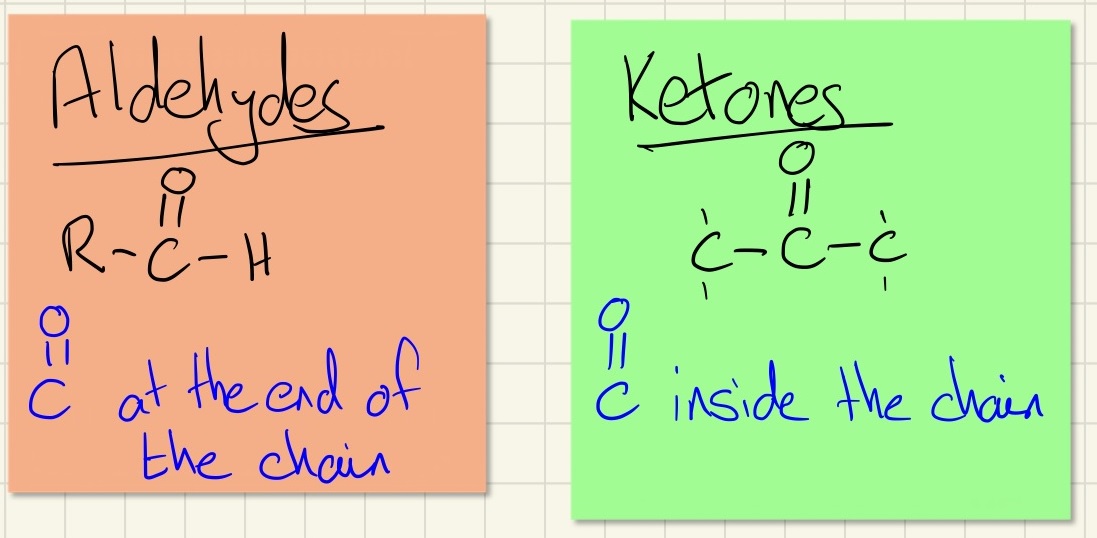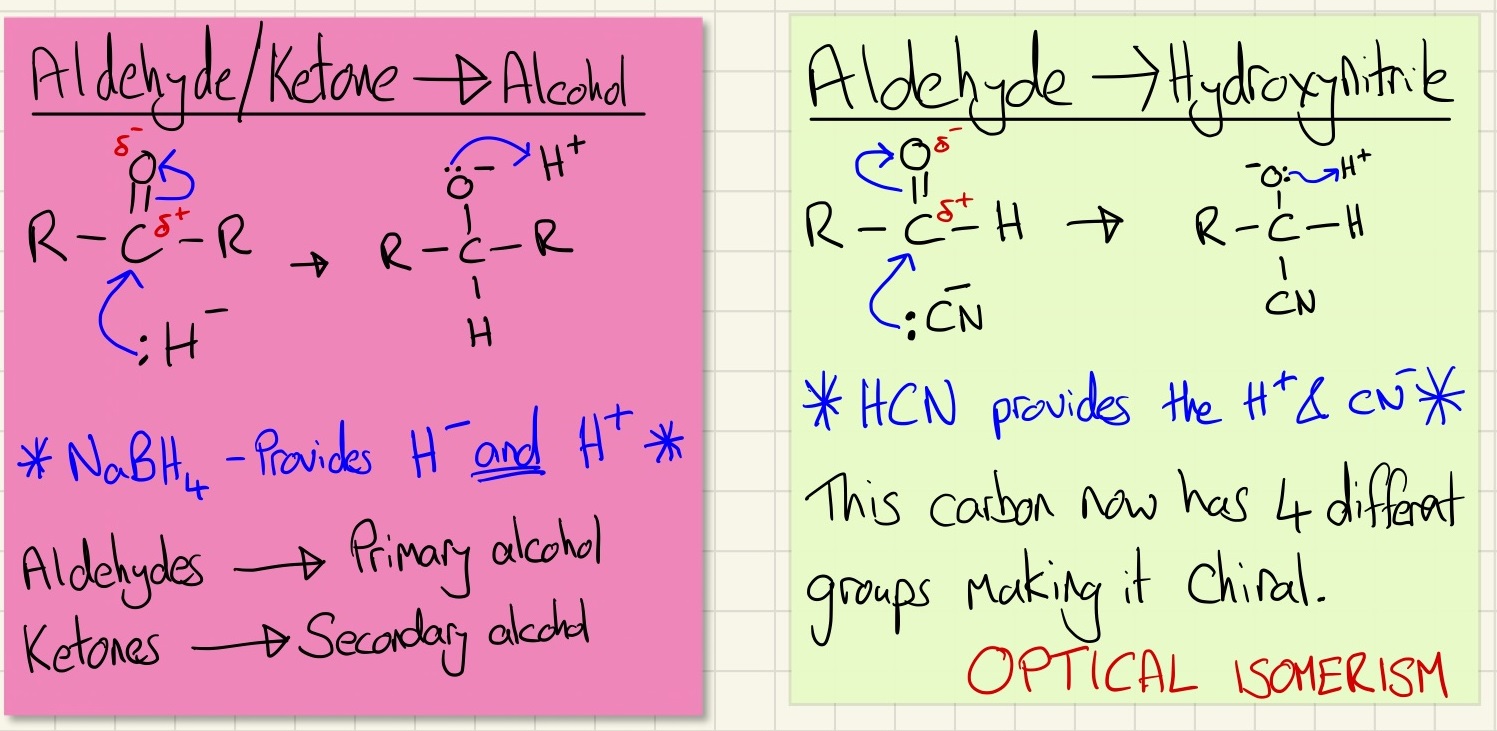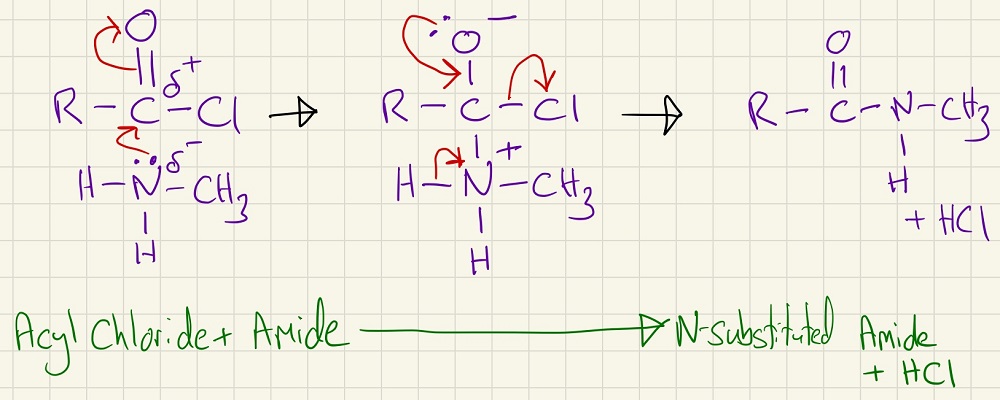A2 - Aldehydes, Ketones, Carboxylic acids and their derivatives
Key learning for this topic
First things first, you need to recognise and name aldehydes and ketones.

Next, we need to look in detail at their reaction mechanisms. Here there are two and you can see the reduction using NaBH4. This is often shown in reactions as [H] as it provides firstly a negative hydrogen ion to attack the delta positive carbon, then a positive hydrogen ion to add onto the negative oxygen. The second mechanism produces a new molecule type called a hydroxy nitrile. As well as understanding this mechanism, be very aware that we are now producing a potentially chiral molecule and, by adding the CN group, we have extended the aliphatic chain.

Look in detail at these mechanisms, ensure that you can see the reverse of oxidation and that the aldehydes return to being primary alcohols and that the ketones return to being secondary alcohols.

We next turn to Acyl Chlorides. These react in a similar way to other carbonyl compounds, however, they are much more reactive due to the electronegative chlorine attached to the carbon atom. This means that they will not require the same temperatures, in fact, you may use some of these (carefully) in lab practicals and they will happen at room temperature.

This is the mechanism for the reaction of an acyl chloride with water:

This is the mechanism for the reaction of an acyl chloride with an alcohol:

This is the mechanism for the reaction of an acyl chloride with an amide:

This page was updated on: 8th November 2023
